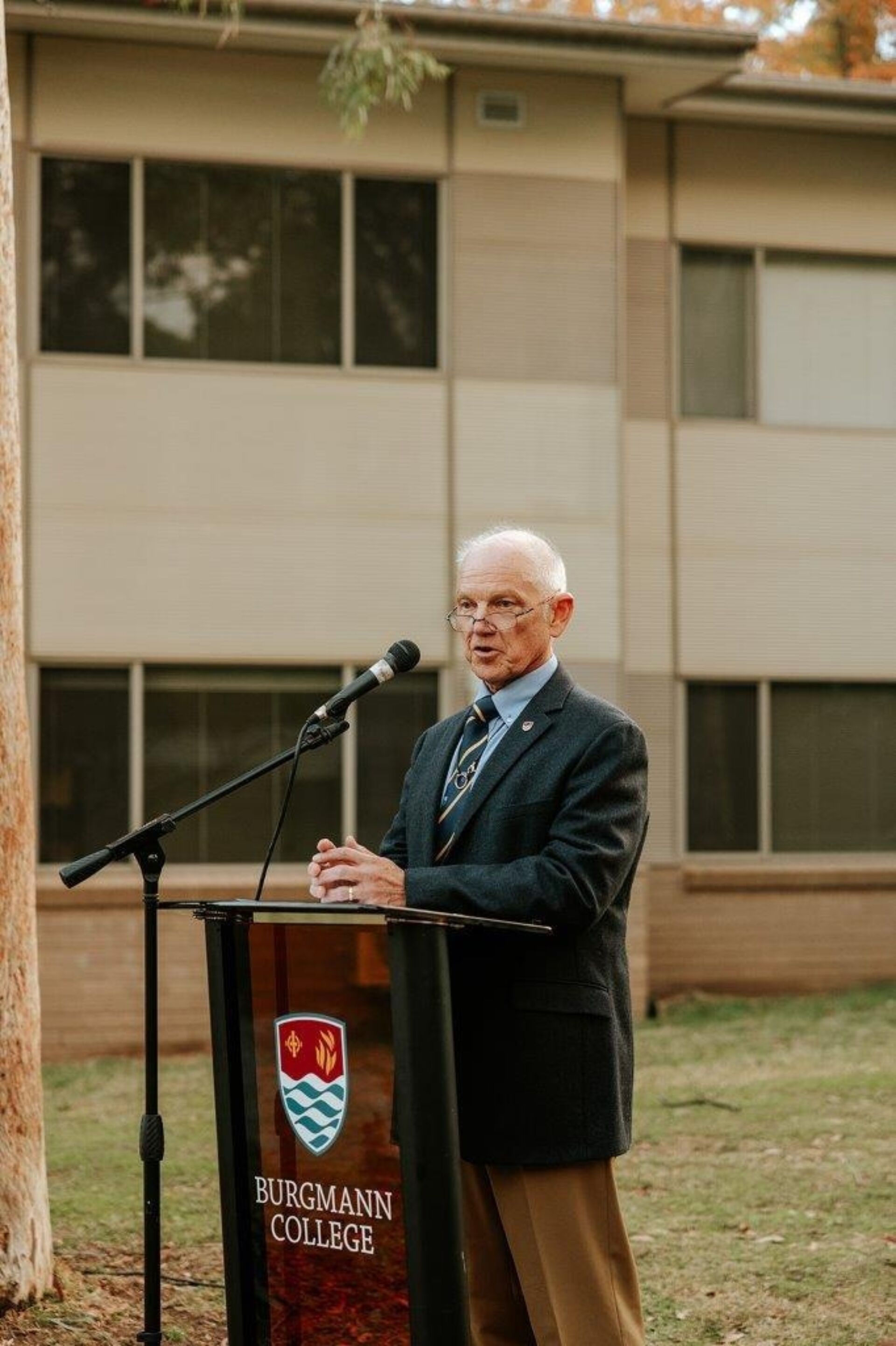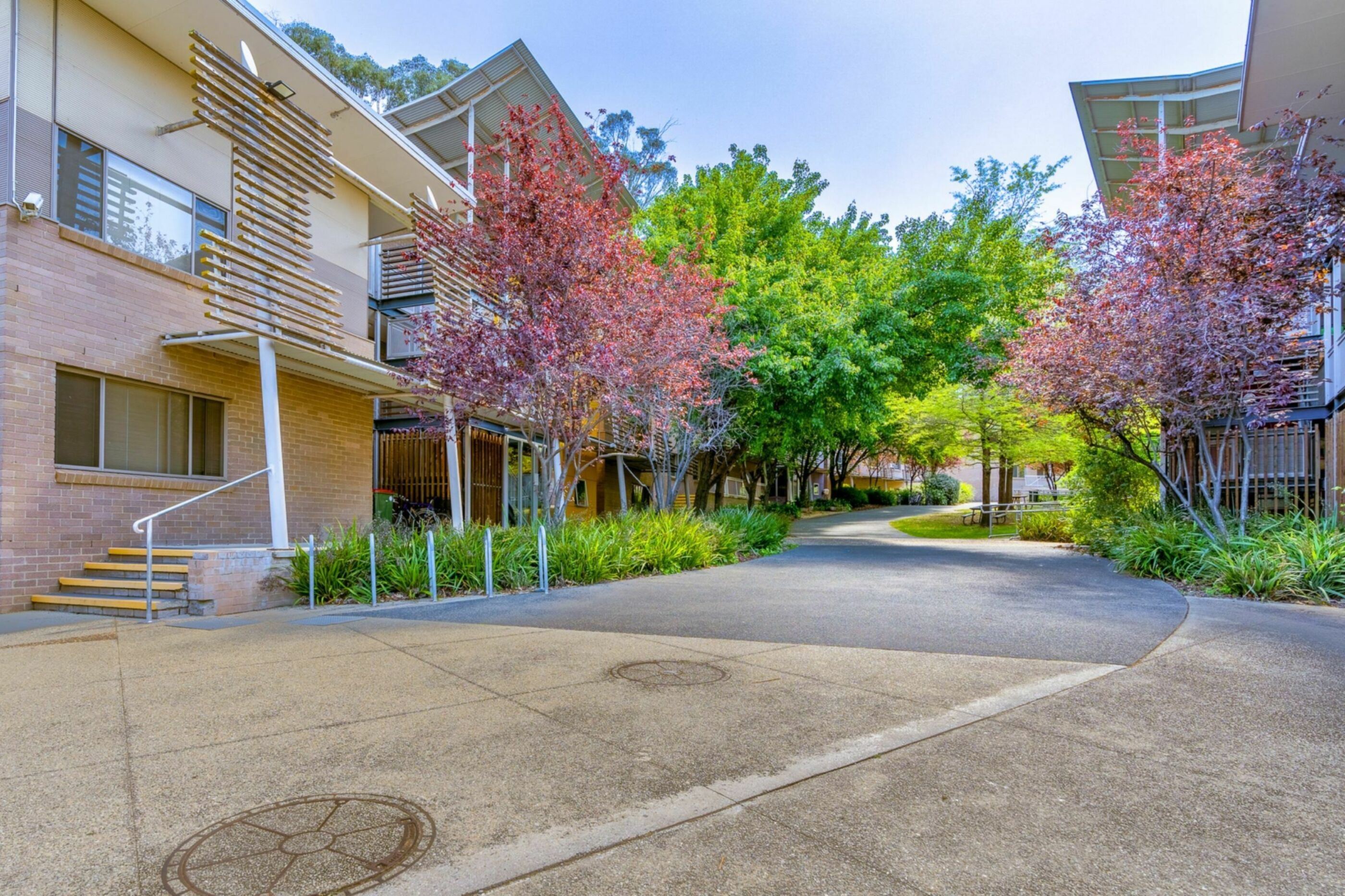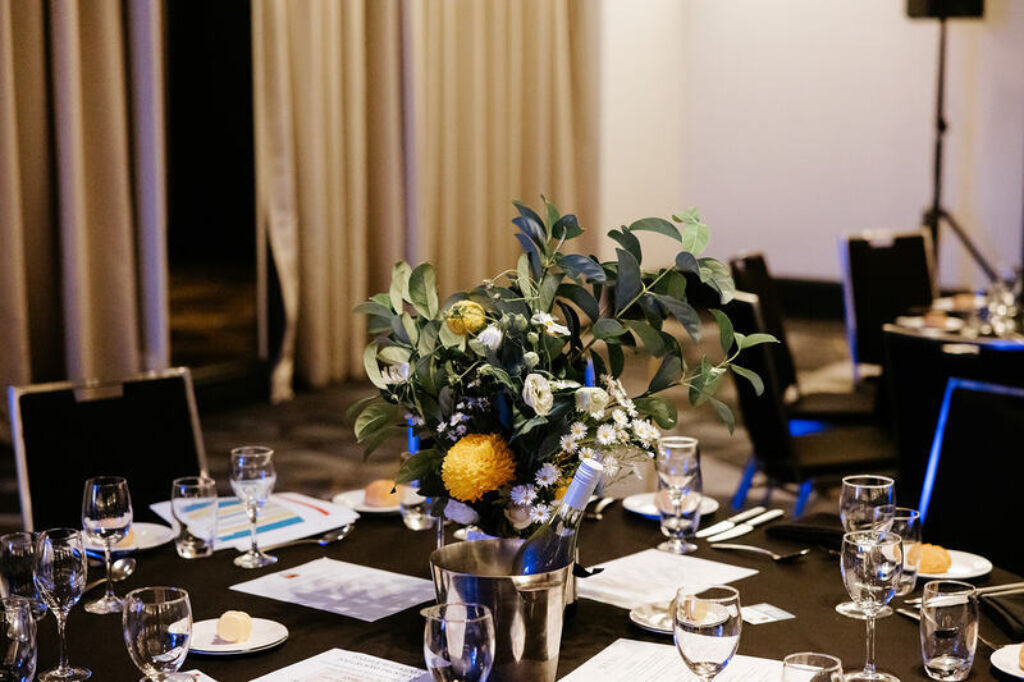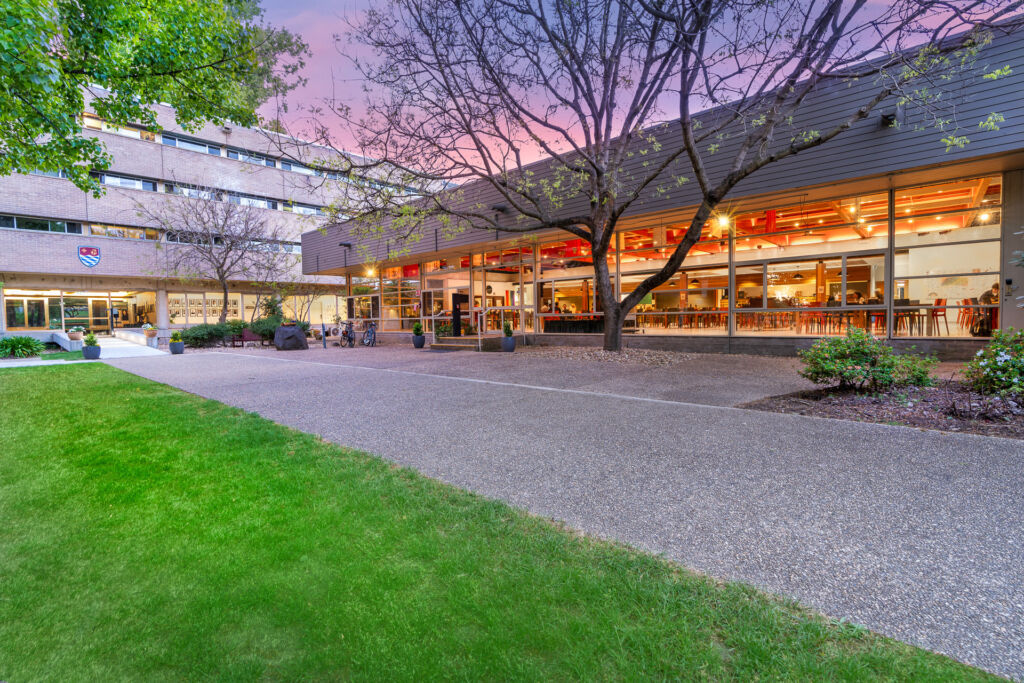Alumnus and former Burgmann Principal Rev Dr Lewis Rushbrook (resident [1971–1976]; Principal [1995–2005]) spoke during the celebrations honouring 20 years of the Burgmann Village; a development on the Burgmann campus that Rev Dr Rushbrook held as a vision for the campus since he began his role as Principal, and eventually made reality.
Former Principal Rev Dr Rushbrook offered these remarks and reflections during the celebratory ceremony held in honour of the Village's 20th anniversary on 6 May 2024.
Thank you, Chairman Greg Mills, for your invitation to speak about the development of the Postgraduate Village on its 20th Anniversary. I am so proud to have been involved in the concept and development of the Village and it’s always a pleasure to be back at Burgmann. It still feels like home!
20 years! Can it be true? Who was here at the opening? [Many hands were raised.] Welcome. And, I dare to ask, who was here at the inaugural Official Opening of the College, back in July 1971? [Only one person other than Rev Dr Rushbrook.]
They were heady days; Wordsworth nailed it in his description of the sentiments around the French Revolution:
Bliss was it in that dawn to be alive
But to be young was very heaven.
Of course, Wordsworth wasn’t here himself, but it was good of him to prefigure those halcyon, neo-revolutionary days of College’s early life. They’re more than etched in the memory: for many of us, they’re absorbed into our DNA.
The original design for the College was for four residential wings enclosing a traditional Oxbridge ‘quad’; but funding challenges meant that only two wings* could be built, each of three floors, and on each floor there were six double rooms; 2 x 3 x 6 = 36.
In 1971–1972, the majority of those double rooms were occupied by postgraduates, maybe 12-15 percent of the College’s 240 residents. That proportion soon declined though, as off-campus self-catered digs became trendy. So for perhaps 20 years, the College was largely a community of 240 undergraduates, a Master/Principal and residential staff.
And that was pretty much the situation when I returned to College from London in 1995, as the eighth principal in its 24 years. It had a great reputation and enviable retention rates for undergraduates: some into their fifth year, some undertaking honours or double degrees.
I brought with me from the UK a model of a college community as old as colleges themselves, but rare at the time in Australia, and perhaps unique in Australia on the scale I had in mind. Namely, a multi-dimensional residential community, not only mixed-gender and scrambled floors (we’d already pioneered there), but postgrads as well as undergrads, faculty members, families, and staff. More, it would be self-catered as well as fully-catered, with a chapel for residents’ reflection at pivotal time in their lives.
It was a proven model for me: I’d seen it working successfully in my and other Oxford colleges and it became my vision—dormant, until, perhaps, circumstances allowed—for Burgmann.
Then, in the late ’90s, as Australian universities made a big play for postgraduates, and the ANU announced that it would launch a postgrad medical school in 2004, the time seemed right for giving it a shot at Burgmann. So, I floated the idea to the Chair, Executive, BRA, Board and Council. There was the inevitable and necessary grilling, sceptics and doubters and no comparable Australian model. But soon the concept was taken on-board.
It was not without challenges. Finance, for one.
• A committee member wearing a finance hat said that if we could get a loan under 10% interest, he’d fly us all to Paris! My bags are still packed!
• Then, while cheering on a Burgmann sports team at an interhall event on the South Oval, there was massive relief to receive telephone message that the Australian Tax Office had approved our application for favourable GST treatment of the development.
• Then it really came down to the wire with the ANU: late on Christmas Eve 2002, Chairman Len Goodman and I, high in ANU’s Chancellery, ‘argy-bargied’ an agreement with ANU for a funding guarantee, and in return, surrendered a sliver of land between the College and John XXIII College for a roadlink to the ANU’s new parking station. (A silver lining? Yes; the John’s boys now had a few more obstacles when tackling their intermittent nudie run around the Principal’s Lodge!)
But challenges were more than financial: there was the potential disruption to study during construction and whether that 200-year old, pre-colonial gumtree at the top of the planned Village would survive.
Most important though, was the potential impact on the existing Burgmann community: How would postgrads fit in? Would it be ‘them’ and ‘us’? Would postgrads take over BRA, or swamp Inward Bound teams? And what low-key social engineering might aid integration?
I won’t gloss over the challenges. They were tough times. It was a risky venture in many ways and quite stressful. But I had the belief that this could and would work, and with:
• Creatives like architect Bruce Harvey and the design team ('What colour shall we paint the apartment doors?' It being autumn, they said, 'Choose a few leaves—let’s go with their colours!');
• Huge commitment and leadership from Chairman Len Goodman;
• Top-down support from ANU;
• Positive occupancy predictions, and;
• Importantly, eyes-wide-open acceptance and in time involvement from the current resident body.
[We had] Grand Designs indeed! And one fine day, 20 years ago, that vision became a reality with the official opening of the Postgraduate Village.
For me, looking back, it’s always somewhat amusing to have lent my moniker ‘Luigi’ to weekend coffee and scones, started in 1972, and now an institution in its 53rd year! Go figure! But more satisfying, deeply satisfying, is seeing that vision come to life. For me, the highlight of my association with Burgmann College.
So, this is my ‘short take' on the concept and development of the Postgraduate Village.
Finally, personal visions aside, I’m longing to hear from later speakers how that vision has actually fared, over these 20 years.
Thank you.
Rev Dr Lew Rushbrook
(Postgrad resident 1971–1976, Staff Tutor 1972–1976, Principal 1995–2005)
Photo gallery: The Village's 20th Anniversary and Smoking Ceremony
Read more: Celebrating the Village's 20th anniversary and unveiling of traditional tree carving in the Village
*Officially named ‘Barassi’ and ‘Homer’, respectively, in 1997 by AFL legend Ron Barassi and Canberra Times Editor Jack Waterford, but in use by residents from 1971 onwards.



